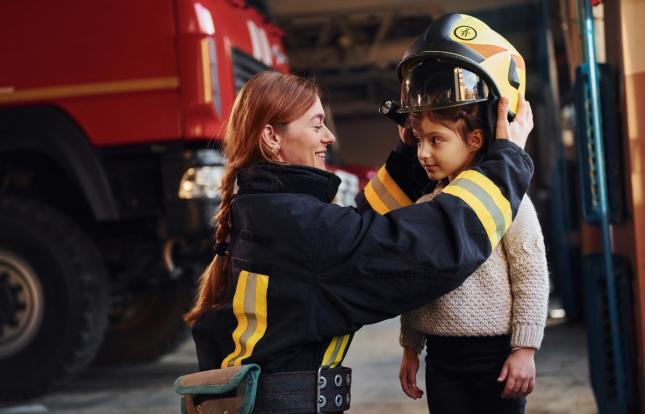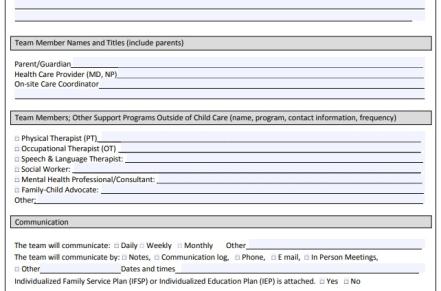January 2025
The following are key resources for Early Care and Education (ECE) programs when responding to the environmental health impacts of wildfires for children, staff, families, and communities. There are physical health issues related to recovery and repair from wildfires that are associated with the air, water, and/or land.
Los Angeles Resources
County of Los Angeles, Department of Water and Power
- News Flash: Timely advisories, updates, and other information related to water quality and safety in Los Angeles.
- Do Not Drink Water Advisory Map: An interactive map for the public to view. Users select the map and then enter their address into the search bar to determine if they are under the Do Not Drink Water notice. The highlighted area on the map denotes the Do Not Drink Water area.
State of California
- Los Angeles Wildfire Response: Resources for those affected by the Los Angeles wildfires on disaster assistance, shelter locations, and real-time updates on fires and closures. It also provides real-time updates on ongoing fires, power shutoffs, school and government closures, and traffic conditions.
- Los Angeles Recovery Centers: Recovery Centers in Los Angeles County for those impacted by the Los Angeles wildfires and resources on financial assistance, housing support, and repair funds.
Applications for Mobile Devices
- South Coast Air Quality Management District (AQMD): Download this app to a mobile device to receive updates and information on real-time and forecasted air quality in the Los Angeles County areas.
- Watch Duty: Download this app to a mobile device to track real-time wildfires and ongoing response efforts in Los Angeles County and throughout California.
State of California, CalRecycle
- Wildfire Debris and Removal: Guidance on removal of household hazardous waste and safely clearing remaining ash and debris.
State of California, Department of Health
- Wildfire Safety: Information and resources for people affected by wildfires, including nonemergency health and behavioral health services, air quality safety, and ash cleanup advisory.
State of California, Health and Human Services
- Emergency Resource Guide: Guide on mental health, social, and health care services and additional resources on disaster preparedness.
CALFire
- Returning Home After a Wildfire: Checklist guidelines for returning home after a wildfire include awaiting official clearance, checking for hazards like structural damage and gas leaks, and inspecting utilities, water, and food.
AirNow
- Wildfire Smoke: A Guide for Public Health Officials: A comprehensive guide updated in 2021, to provide state, tribal, and local public health officials and others to prepare for smoke events, and when wildfire smoke is present, to communicate health risks and take measures to protect the public.
- Wildfire Guide - Post-Publication Updates: Guide authors and contributors will use this site to post up-to-date guidance, documents, resources, and other new evidence-based information since the guide was originally developed in 2019. This information will also be used in the next update to the Guide.
- Fire and Smoke Map: An interactive map where users can enter their zip code, city, and/or state to obtain updates on current air quality, air quality forecasts, and primary and other pollutants in that area.
- After a Fire: Guidance on safety and recovery actions after a wildfire event, including returning home and cleanup.
- Children’s Book on Wildfire Smoke and Air Quality: A colorful picture book that helps children understand wildfire smoke and air quality.
Centers for Disease Control and Prevention (CDC)
- Outdoor Hazards After a Wildfire: Guidance and resources on outdoor hazards that may occur after a wildfire.
- Stay Safe After a Wildfire: Information and resources on health and safety issues related to wildfires.
- Ready Wrigley Prepares for Wildfires and Smoke: The CDC created Ready Wrigley to provide young children, parents, guardians, and teachers with tips, activities, and stories to help the whole family prepare for emergencies related to wildfires and smoke. Also includes information related to recovery.
Environmental Protection Agency (EPA)
- Protecting Children's Health During and After Natural Disasters - Wildfires & Volcanic Ash: This resource describes the impact of wildfire smoke on children’s health, strategies to protect children related to outdoor activities and keeping indoor air clean, and links to key resources.
- Smoke-Ready Toolbox for Wildfires: The toolbox includes information and resources from the EPA, the USDA Forest Service, and other federal, state, and community agencies and organizations to help educate people about the risks of smoke exposure and actions they can take to protect their health.
Office of Head Start
- Preparing for a Wildfire: Information and resources on how ECE programs can respond to wildfires, including preparedness, response, and recovery.
- Tips for Working with a Ventilation Consultant: Tip sheet that provides prompts for questions to ask when working with a ventilation consultant who can support programs to assess their ventilation systems and recommend improvements.
Western States PEHSU (Pediatric Environmental Health Specialty Unit)
- Wildfires and Children's Health: Information on resources for exploring wildfire and air quality data as well as associated health effects.
- Protecting Kids from Wildfire Smoke: Actions for California Schools: Guidance on responding to the impacts of wildfires on children and schools from California schools’ experiences with wildfires.
Masks
- Masks to Protect Children and Pregnant Women from Wildfire Smoke: A fact sheet with guidance on selecting and using masks to protect children and pregnant women from the effects of wildfire smoke.
University of California, Center for Climate Health and Equity
- Wildfires and Health Education Hub: An educational series of infographics to raise awareness of the broad range of health effects of wildfires and other guidance on what people can do to protect themselves from wildfire smoke. Includes information focusing on specific populations, including children and pregnant women.
South Coast Air Quality Management District (AQMD)
- Health and Safety Tips for Wildfire Smoke and Ash Exposure: Follow these tips on protecting health during wildfires by lowering exposure to smoke and ash, including steps to take before, during, and after wildfires.
Wildfires – Mental Health
The following are key resources for ECE programs when responding to the mental health impacts of wildfires for children, staff, families, and communities. There are mental health issues related to recovery and repair from wildfires.
American Academy of Child and Adolescent Psychiatry
- Facts for Families: Helping Children After a Disaster: Parents can use this resource to understand children’s age-related responses to disasters and talk to them about how they are feeling.
American Academy of Pediatrics
- Guidance for Discussing Tragedies and Traumatic Events with Children: This resource serves as a guide for ECE providers and parents to help children of different ages, developmental delays, disabilities, or with Autism Spectrum Disorders cope with tragedies in a supportive manner.
Child Mind Institute
- Helping Children Cope After a Traumatic Event: Tips parents can use to help children of different ages cope with traumatic events.
Child Care Aware
- Books to Help Children Cope with Disaster – Children's Books: This list includes books for every age level on helping children cope with disasters, violence, or other traumatic events.
National Association of School Psychologists
- Helping Children After a Wildfire - Tips for Parents and Teachers: This tip sheet discusses what parents and teachers can do to help children cope after a wildfire. It focuses on challenges associated with wildfires and possible reactions of children and adolescents to guide parents and teachers supporting youth.
The National Child Traumatic Stress Network
- Helping Young Children with Traumatic Grief - Tips for Caregivers: This resource outlines the feelings of young children struggling with the death of someone meaningful and offers suggestions on what caregivers can do to help.
Information modified with permission from the Office of Head Start National Center on Health, Behavioral Health, and Safety.






